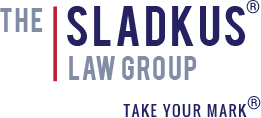USPTO Implements the Trademark Modernization Act of 2020
On December 18, 2021, the U.S. Trademark Modernization Act of 2020 (“TMA”) went into effect. As you may recall from our February 2021 client alert, the TMA was developed in response to growing concerns over the number of federally registered trademarks that are not used in U.S. commerce, including fraudulent trademark registrations relying on falsified photos to demonstrate use of the mark. The TMA amends the U.S. Lanham Act (Trademark Act) in several significant ways.
Shorter Office Action Response Deadlines
First, the TMA provides the USPTO additional flexibility in setting Office Action response deadlines, so long as applicants can extend the time to respond up to the full six-month period. In accordance with this provision, on December 1, 2022, the USPTO will begin implementing a three-month response deadline for all applicants except Section 66(a) Madrid Protocol applicants and for all registrants. Additionally, applicants and registrants are permitted to file a single three-month extension of time to respond for a fee of $125.
Expungement and Reexamination Proceedings
Second, the TMA establishes two new procedures for cancelling a trademark registration based on non-use of the mark: Expungement and Reexamination. Prior to the implementation of the TMA, U.S. law provided that a third party could only request cancellation through the Trademark Trial and Appeal Board (“TTAB”) or in a lawsuit in district court. The new procedures allow the USPTO Director to review and process cancellation requests directly. These new procedures can be initiated by third parties or by the USPTO Director on his own initiative.
-
- Expungement: The first new procedure provides for the expungement of trademark registrations for marks that have never been used in commerce in connection with some or all of the goods and/or services recited in the registration. The TMA also makes expungement (a mark having never been used) a ground for cancellation before the TTAB. Prior to December 27, 2023, expungement proceedings can be initiated for any registration that has been registered for at least three years. After December 27, 2023, expungement proceedings can be initiated between three and ten years from the registration date.Expungement proceedings are anticipated to particularly impact foreign registrants, as there is no use requirement for registrations based on a home country registration under Section 44(e) or Madrid Protocol registrations under Section 66(a). Accordingly, it will become more important that foreign registrants make use of their trademarks in U.S. commerce within three years of registration.
- Reexamination: The second new procedure provides for the reexamination of trademark registrations in which the applicant made improper use claims during the examination process prior to the mark’s registration in connection with some or all of the goods and/or services recited in the application. For Section 1(a) use-based applications, the registration can be challenged on the basis that the trademark was not used on or before the filing date of the application. For Section 1(b) intent-to-use applications, the registration can be challenged on the basis that the trademark was not used on or before the later of (1) the filing date of the amendment to allege use; and (2) the deadline to file a statement of use, including all approved extensions thereof. The proceedings must be requested within the first five years after the registration date.
Attorneys are permitted to file petitions for expungement or reexamination on behalf of their clients without disclosing their client’s identity. However, the USPTO Director has the authority to require that information in particular cases.
Petitions for expungement and reexamination must include a verified statement establishing that a reasonable investigation was conducted into the use of the mark. The current USPTO filing fee for these petitions is $400 per class.
Letters of Protest
Third, the TMA codifies the existing practice of the USPTO to accept evidence offered by third parties during examination regarding grounds for refusing registration via a Letter of Protest. Under the TMA, the USPTO Director will now have two months in which to review the Letter of Protest.
Presumption of Irreparable Harm for Injunctions
Fourth, the TMA confirms that a plaintiff seeking an injunction to remedy a trademark violation is entitled to a rebuttable presumption of irreparable harm. Previously, a circuit split had developed as to whether irreparable harm can be presumed when a trademark violation had been proven. The TMA clarifies that a rebuttable presumption of irreparable harm exists for trademark violations, given the consumer protection concerns that would occur otherwise.
The full TMA can be viewed here. A summary of the new procedures established by the TMA is provided on the USPTO’s website, here.
Please reach out to us with any questions, or for more information about the new law.




